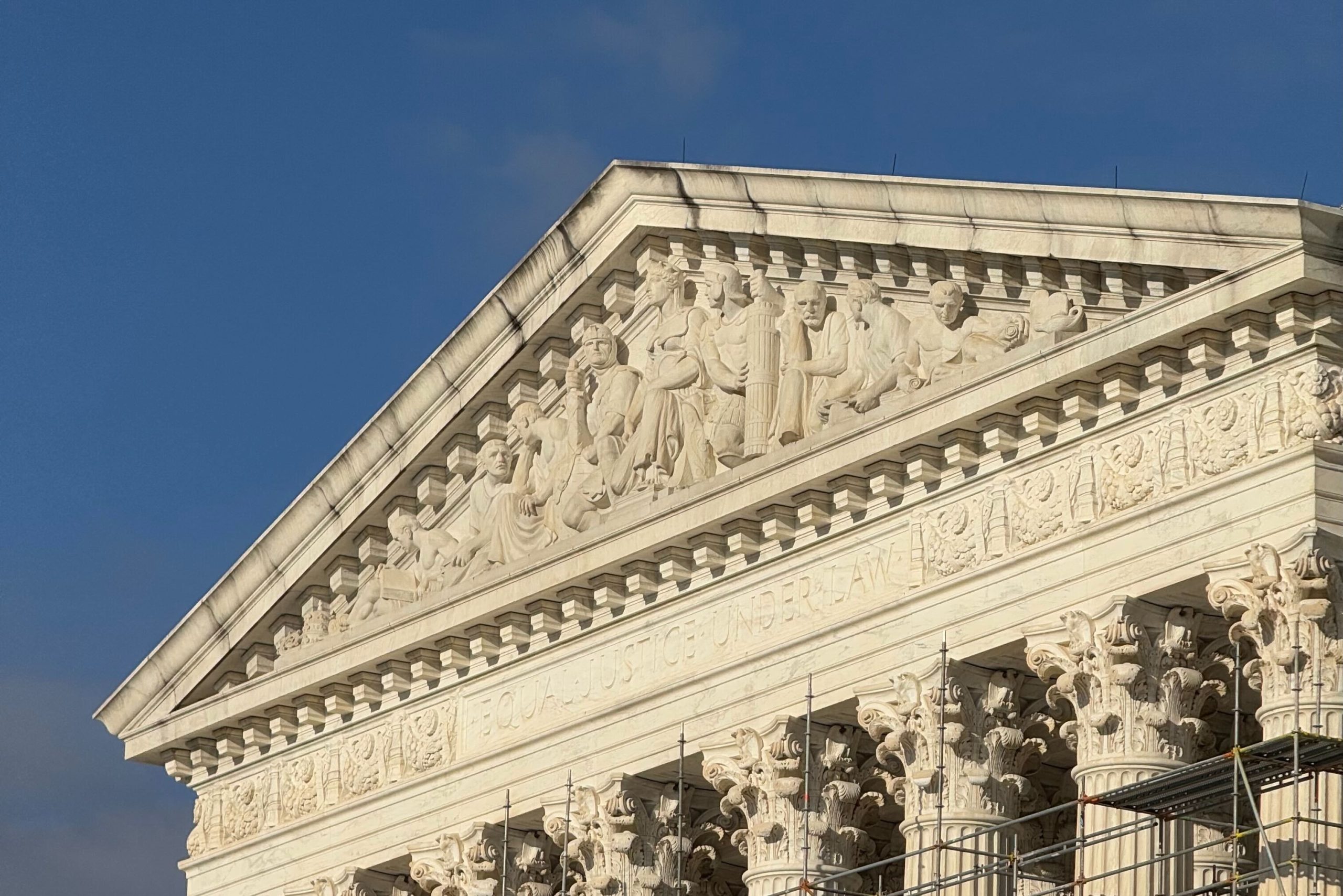Q&A
Will the court overturn a 1930s precedent to expand presidential power, again?

on Apr 10, 2025 at 10:11 am

In the two-and-a-half months since Donald Trump’s inauguration, a rush of challenges to executive orders and directives have made their way through the courts and have now started to reach the justices in earnest. Alongside those orders, Trump fired the heads of several independent government agencies, experts who oversee technical matters of government including the enforcement of antitrust laws and review of federal workers’ challenges to their dismissals. Although the president can remove most government officials for any reason, those positions are protected by Congress from firing without good cause, such as “malfeasance in office,” and by a 1935 Supreme Court case that upheld such for-cause limits.
But some conservative legal scholars, and the president, have embraced a much broader view of executive power, one in which the president has complete authority to fire agency heads. The administration has indicated that it will ask the Supreme Court to overturn a 1935 decision, Humphrey’s Executor v. United States, which would allow the president to do just that. In that decision, the court barred Franklin Delano Roosevelt from firing a Republican member of the Federal Trade Commission. The decision protects the heads of independent, multimember agencies from unjustified removal to allow the agencies to function without the threat of political retaliation.
On Monday, the U.S. Court of Appeals for the District of Columbia Circuit ordered the Trump administration to reinstate Cathy Harris, of the Merit Systems Protection Board, and Gwynne Wilcox, of the National Labor Relations Board. Harris and Wilcox were fired in February and argue that they were illegally removed without the cause that the law requires. The federal government appealed to the Supreme Court on Wednesday, and just hours later Chief Justice John Roberts put both reinstatements on hold while the court considers the request.
I spoke recently with Stephen Vladeck, a professor at Georgetown University Law Center and close observer of the recent rise of the court’s emergency docket. His book on the subject is called The Shadow Docket. We discussed how likely the current court is to overrule Humphrey’s Executor and what might stand in its way, even as the majority has embraced an expansive view of executive power.
Our conversation was conducted by phone and email and has been edited for clarity.
Back in February, then-Acting Solicitor General Sarah Harris wrote in a letter to Congress that the Trump administration planned to challenge Humphrey’s Executor, is there a history of presidents ignoring or pushing that precedent since the 1930s?
The short answer is no. Obviously opposition to Humphrey’s Executor has become something of a cause célèbre especially among conservative judges and scholars, but this is the first time I think we’ve seen the justice department specifically take the position not just that it’s wrong, but that it should be overruled.
What about FDR, where does the case come out of?
FDR took the position that, under the Supreme Court’s 1926 ruling in Myers, he had the unencumbered power to remove anyone on the Federal Trade Commission and the Supreme Court said he was wrong. The Supreme Court in Humphrey’s Executor unanimously upheld the for-cause removal limitations that Congress had written into the FTC act.
So at least since 1935, presidents of both parties have labored under the assumption that that’s at least good law, whether or not it’s rightly decided, and so have not attempted to remove members of the FTC or the NLRB, or perhaps even more importantly the Federal Reserve, without at least some argument that they met the relevant statutory requirements of good cause.
Was there any analogous protection for that relationship between Congress and the executive before the New Deal era?
Congress had started putting in for-clause removal restrictions long before FDR came along. I think it was just that FDR was, if not the first president, certainly the most vocal president about the scope of a president’s constitutional removal powers. In some respects, I think it was the Supreme Court that changed things when it handed down Myers. Because there’s language in Chief Justice Taft’s majority opinion in Myers that for the first time opened the door to arguments that for-cause removal restrictions were generally unconstitutional. So if we’re building the chronology, the restrictions existed, and then Myers comes along and suggests, perhaps inartfully, that all of them might be unconstitutional. And then Humphrey’s Executor was basically the test case for that proposition.
Interesting that Taft was the one that comes under.
There’s a profound historical irony in the fact that it’s the only president to ever serve on the court who’s in a position in Myers to endorse a very very broad and indefeasible presidential removal power.
So back to where Humphrey’s Executor sits today, how narrow are those protections?
One of the tricky things about Humphrey’s Executor is that, even though the Supreme Court hasn’t overruled it, it has to at least some degree reconceptualized it. Humphrey’s Executor itself, if you read Justice Sutherland’s opinion, spends a lot of time talking about how what the FTC does is not purely executive power. Instead, he talks about the quasi-judicial role that the FTC plays and even in some respects, the quasi-legislative role that the FTC plays.
Even though the modern court has not overruled Humphrey’s Executor, it has really, I think, heavily watered down that understanding. Indeed, it has increasingly come to treat Humphrey’s Executor as this extreme outlier — as one of two Supreme Court precedents that are at least superficially inconsistent with the broad view of the unitary executive toward which the court has otherwise gravitated, Morrison v. Olson being the other.
So the Supreme Court today basically takes the view that there’s Morrison, there’s Humphrey’s Executor and there’s nothing else. And that was the basis for the court’s 2020 ruling in Seila Law that Congress could not insulate the head of the Consumer Financial Protection Bureau from presidential removal because, unlike the head of these multi-member commissions, the head of the CFPB is a single person.
In a world in which we were being faithful to the analysis of Humphrey’s Executor and not just the result, it shouldn’t make a difference whether the head was a single person or a multimember board; all that would matter is the type of power that the agency was wielding. But in a world in which Humphrey’s Executor and Morrison are nothing more than exceptions to the rule, then all of the litigation tends to reduce to whether the agency structure at issue is just like the exceptions or not.
You mentioned the Fed before, where does the Fed stand?
Part of why I believe that even this court has been reluctant to overrule Humphrey’s Executor, and it’s had chances, is because I think there is an unspoken but widely shared view that the independence of the Fed (and no other agency) is really important. I don’t think the court has yet been provided with a coherent rationale for a way in which it could overrule Humphrey’s Executor without also undermining the independence of the Fed, and thereby risking yet further harm to the stability of our economic system.
Of course, these cases are not just about the FTC and the Fed — there are a bunch of multimember-headed agencies, the SEC, the FCC, the Merit Systems Protection Board, etc., that are implicated by Humphrey’s Executor. But I think the real 800-pound gorilla is the Fed. Maybe it’s enough to just assert that the Fed is different, but at least to this point, there’s been no persuasive explanation for why, legally, that’s so.
But given how the court has handled what’s come to them so far from the Trump administration, is the field wide open for them to take on Humphrey’s Executor?
I think two things can be true. One, I think the court would rather not have to decide one way or the other. And two, I think the Wilcox and Harris cases were always going to force the court to take up the question.
Do you have a sense of where the justices stand individually on this?
I don’t doubt that there are more than two votes to overrule Humphrey’s Executor. But, to me, the most important data point here is that the court has thus far resisted invitations to do so. And if the court were in a hurry to overrule Humphrey’s Executor, I think it would have already.
Maybe that was just because it didn’t have to face the issue; maybe there are five or more votes on the merits. But if the theory is correct that at least some of the justices’ reticence is because they don’t want to undermine the independence of the Fed, at least so far, no one has been able to square that circle.
On Wednesday, the chief justice moved very quickly to pause the district court’s orders that had reinstated Harris and Wilcox, just hours after the administration appealed to the court. Does that tell us anything? What do you have your eye on for what happens next?
I think it tells us two things — first, that the chief justice may have been a bit exasperated by the ping-pong nature of the proceedings in the lower courts, where Harris and Wilcox were fired, then not fired, then fired, then not fired again. And second, it strongly suggests to me that the court is going to use these cases to resolve the Humphrey’s Executor question — perhaps not by answering it through the Trump administration’s emergency application, but by taking up the government’s request that it treat the application as a petition for certiorari before judgment, and take up these cases for plenary review on an expedited basis now. If nothing else, it seems increasingly likely that the fate of Humphrey’s Executor will be resolved before the justices rise for their summer recess.


